17 places in Asia where it is worth visiting at least once in a lifetime

Natural phenomena of incredible beauty and structures erected by people with a century of history will not leave you indifferent.
1. Colored Hills of Danxia, China
The geological park, included in the UNESCO World Heritage List, is famous for its unusual colorful hills. The picturesque landscape with multicolored bands of blue, red and yellow hues arose due to the effects of climate, soil erosion, changes in the earth's crust and deposits of sandstone and other minerals. It took millions of years for nature to create this beauty.
How to get there. The geopark is located 40 kilometers from the city of Zhangye, from where you can take a taxi to the striped mountains - the road will take a little more than an hour. Entrance is paid, for the convenience of movement on the territory run free buses.
When to come. The park is open to the public in winter and summer, however, in the cold season it begins to work later and closes earlier. Therefore, it is better to choose a warm season and plan a visit for the morning.
![]()
2. Borobudur Temple Complex, Indonesia
The Buddhist temple complex, built in 780-840 AD as a place of pilgrimage and worship of the Buddha, is located on the island of Java. It was abandoned for almost a millennium and hid under the thickets of the jungle, until UNESCO took the historical monument under its care and restored it.
Borobudur is designed in the form of a mandala according to the model of the Universe, according to the teachings of Buddhism. To comprehend the truth, the pilgrim must walk from the foot of the temple to its top, rising in a spiral through all the tiers.
On the way to nirvana with a length of almost five kilometers, numerous Buddha statues and bas-reliefs with images of deities, fantastic animals and religious subjects are installed. Passing each level, pilgrims get acquainted with the teachings of the Buddha and learn stories from his life.
How to get there. Borobudur is located 40 kilometers from the city of Yogyakarta. From there it is most convenient to get to the attraction by rented car or scooter, taxi or with a tour group.
When to come. At any time of the year, but the high season and the warmest and driest weather are in summer and early autumn. So be prepared for the abundance of tourists. And on the first full moon of summer, which falls on May or June, they celebrate the Vesak holiday - the birthday of the Buddha. In Borobudur on this day you can watch the procession of Buddhists and various performances.
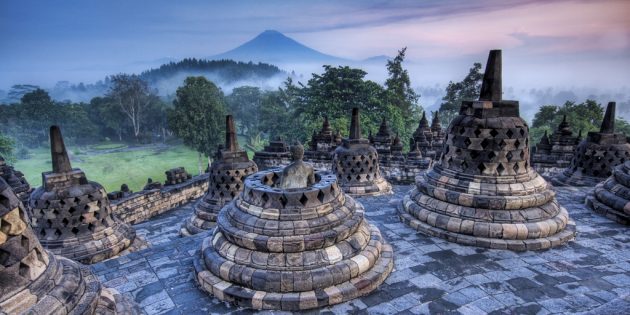
3. Taktsang Lakhang Monastery, Bhutan
The Buddhist monastery, whose name means "tigress's nest", is built on a slope of steep cliffs at an altitude of more than 3,000 meters above sea level. Long before its construction, famous monks and saints meditated in local caves.
Because of the unusual location, it seems that the monastery literally floats in the air. And if you go up to it, you will have a stunning view of the picturesque landscapes.
How to get there. The monastery is located 10 kilometers from the city of Paro. From there, you can take a taxi to the foot of the mountains, and then you will have a steep climb to the "tigress nest". If you are strong in spirit and your health allows, climb the path on foot. Otherwise, rent a mule. The road will take about two to three hours, but you can make a stop in a cafe and stop at the observation deck to gain strength.
When to come. At any time of the year.
Things to consider. To get to Taktsang Lakhang, you need to request permission to visit the monastery in advance from the Ministry of Culture of Bhutan, otherwise you will not see a religious monument.
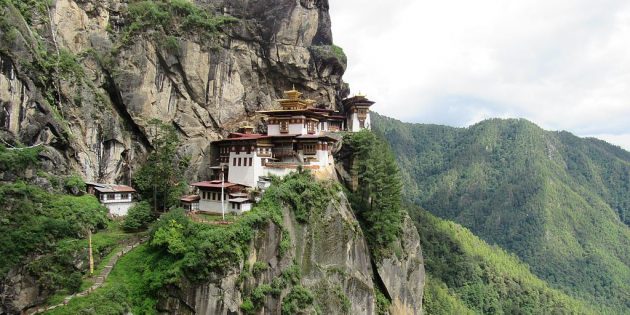
4. Nong Han Kumphawapi Lake, Thailand
A unique natural object of incredible beauty. The entire surface of the reservoir is covered with bright colors of pink color - lotuses. In some parts of the lake you can swim on a boat with a guide and find yourself in the epicenter of this splendor.
And here live various species of birds, including graceful white herons, which are interesting to observe in their natural habitat.
How to get there. 40 kilometers from the lake is the city of Udon Thani, from where you can get to the place yourself by car, taxi or bus along with the excursion group.
When to come. To see this miracle, you need to be in Thailand from the beginning of November to the end of March - during the flowering period of lotuses (but december is considered the most successful month). And come to admire the flowers - early in the morning, at dawn, when the buds are just opening.
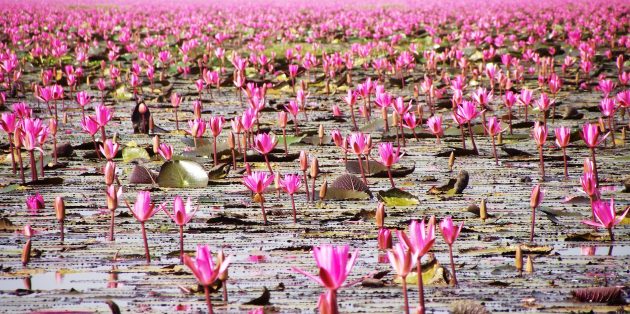
5. Lakes of Kelimutu volcano, Indonesia
Three crater lakes are not like other reservoirs: they periodically change their color, becoming turquoise, green, milky blue, red-brown or even black.
This is due to chemical reactions caused by mineral deposits at the bottom, but the locals believe in the mystical cause of the anomaly and consider the lakes the last refuge of the souls of the dead, where they find peace.
How to get there. The volcano is located on the island of Flores. You can get to the lakes from the nearest major cities to them - Maumere (105 kilometers) and Ende (60 kilometers) - by car, taxi or regular bus. The closest to the place is the small village of Moni (only 15 kilometers away), where you can stay for the night, and then - also by bus or car - go to the volcano.
When to come. The attraction can be visited at any time of the year, but travelers are advised to choose the dry season - from May to September. In the peak tourist months - in July and August - you need to book accommodation near the volcano in advance. The most beautiful lakes look at dawn, and to get from Moni to the observation deck by this time, you will have to wake up at about 3 am.
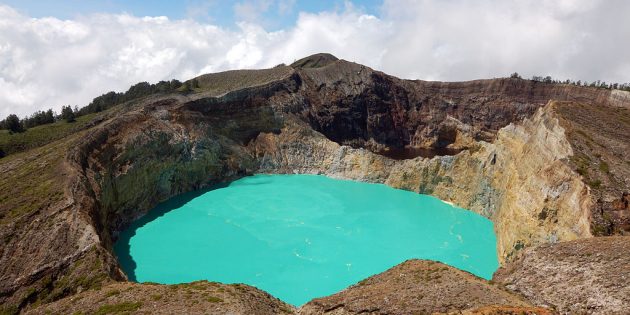
6. Son Dong Cave, Vietnam
The largest cave in the world is located in Phong Nha Kebang National Park. The height of Shongdong is about 200 meters, and the width is 150 meters. It stretched for 5 kilometers in length.
The cave was formed several million years ago, but it was discovered only in 1991, and the first tourist groups visited Son Dong even later - in 2013. Inside you can find ancient fossils, see a real jungle with tall trees, giant stalactites and stalagmites and meet many species of birds and animals. The scale of Son Dong is simply amazing, but getting to it is not so easy and not everyone can do it.
How to get there. To do this, you need to purchase a tour in advance from an authorized company, for which you will have to pay a large amount - about $ 3,000 in a few days. This is the only legal way to visit Son Dong.
When to come. The cave is open to tourists from February to August.
Things to consider. You must be well prepared and healthy enough: just to get to the cave, you have to walk more than 10 kilometers through the jungle, overcoming rivers and streams.
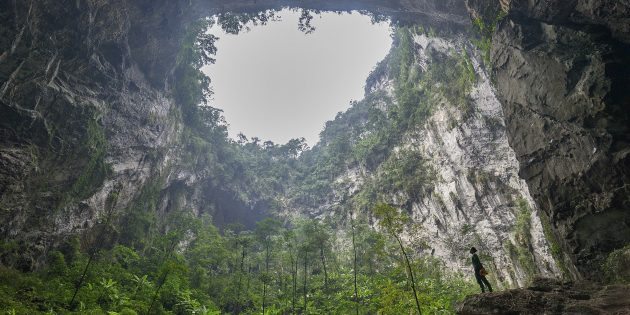
7. Rice terraces of Tegalalang, Indonesia
On the island of Bali, in the province of Tegalalang, there are some of the oldest rice terraces in the region. Locals continue to harvest and take care of the plantation, and travelers come here for fantastic views and vivid photos as a souvenir. It's just a beautiful place to look into if you find yourself in Bali.
How to get there. Many excursion routes pass through the rice terraces. The easiest way to get there on your own is from Ubud - only 5 kilometers by car, taxi or scooter.
When to come. The facility can be visited at any time of the year.
Things to consider. At different stages of rice ripening, the terraces look different, but always impressive. When the rice is first planted, they are flooded with water, in which the clouds and the sky are reflected. Then the shoots grow and the plantation becomes a rich green color. And when the grains are ready for collection, the terraces acquire a golden hue. The crop is harvested three times a year.
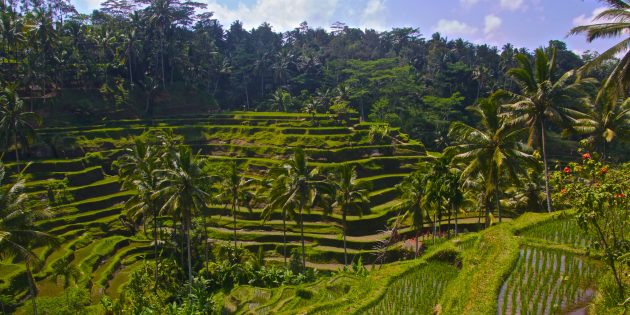
8. Mount Fuji, Japan
The sacred mount Fuji (or to be more precise, it is a volcano) is one of the most recognizable symbols of the Land of the Rising Sun. It became an integral element of Japanese art objects of different eras, and the locals themselves believed that Fuji, who conquered the peak, would gain immortality.
The mountain is part of the vast Fuji-Hakone-Izu National Park, and every year thousands of tourists climb to its top and receive, although not eternal life, but definitely a lot of unforgettable emotions.
If your goal is just to enjoy the views, and not to conquer the top, you can take a walk around the park. There are mountain lakes and waterfalls, hot springs and ancient temples.
How to get there. The National Park can be reached by bus from Tokyo in a couple of hours.
When to come. If you are attracted exclusively by the views, then in winter and early spring the mountain peak will be snowy and even more beautiful. Those whose goal is to conquer Fuji will be suitable for the summer season. Climbing the mountain is allowed from July to early September, but the exact dates may vary depending on weather conditions.
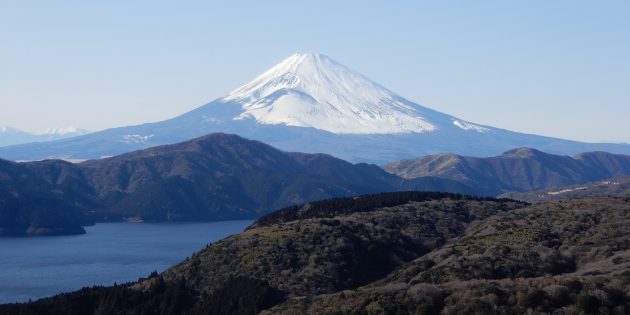
9. Forbidden City, China
The world's largest palace complex is a UNESCO World Heritage Site. From the first half of the XV century to the beginning of the XX century, it served as the residence of the emperors of the Ming and Qing dynasties. The Forbidden City is located in the center of Beijing and covers an area of more than 70 hectares. On the territory there are almost 1,000 buildings, in which there are almost 10,000 rooms. Connoisseurs of traditional Chinese architecture will like it here.
How to get there. Since the attraction is located in the center of Beijing, you can get to it by city subway. Tiananmen East Station is just 100 metres away.
When to come. The Forbidden City is open to visitors all year round.
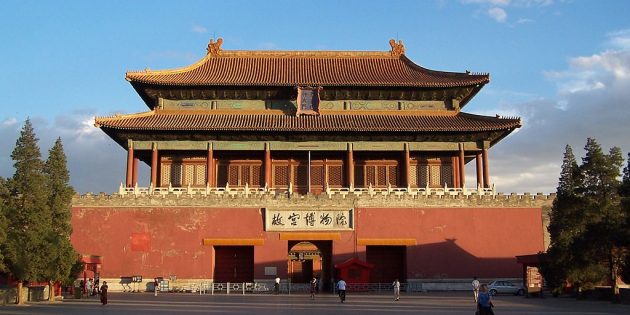
10. Detian Falls, Vietnam, China
The picturesque waterfall is located on the Vietnamese-Chinese border, so you can enjoy the scenery from any of these countries. Not very high, but wide enough – 300 meters – Detian is considered the largest in Asia. Closer to it, you can swim on a boat or raft with a local guide.
How to get there. By bus, taxi or car from Caobang City to the waterfall go about 2-3 hours if you are traveling in Vietnam. And from China by bus from Nanning to Detian - 5 hours of travel.
When to come. It is best in the summer to see the full-flowing waterfall in all its glory. True, this season there will be quite a lot of tourists.
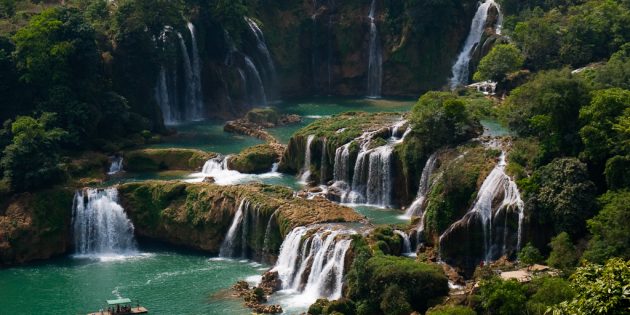
11. Angkor Archaeological Park, Cambodia
The world's largest temple complex with unique architecture for several centuries was the center of the Khmer Empire. It is considered one of the most important archaeological sites in Southeast Asia and is protected by UNESCO. On the territory of the complex there are ruins of temples of the IX-XV centuries. Among them is the famous Angkor Wat, whose silhouette is transferred to the national flag of Cambodia.
How to get there. From the nearest town of Siem Reap, which is only 6 kilometers away, the temple complex can be reached by taxi, mini-bus, motor-rickshaw or excursion transport.
When to come. From November to February. In March and April, it will be too hot, and then the rainy season begins.
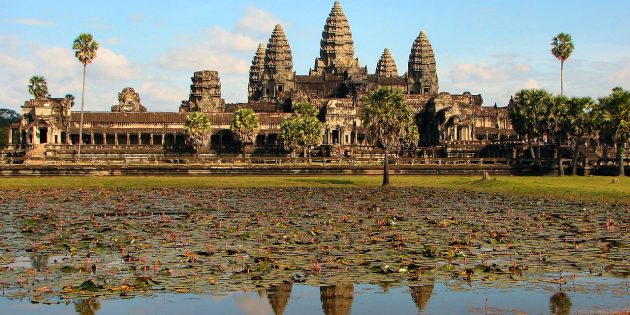
12. Shilin Stone Forest, China
Some blocks of stone, as if grown out of the ground, somewhat resemble carelessly planted trees, others offer our imagination more intricate silhouettes. But they all look monumental. Shilin is part of the South China Karst, which is a UNESCO World Heritage Site.
How to get there. A daily train departs from Kunming City to Shilin Station. The station and the reserve are separated by another 4 kilometers, which can be walked or taken by taxi. There is also a bus running from Kunming, and it will take you to the park a little closer.
When to come. At any time of the year.
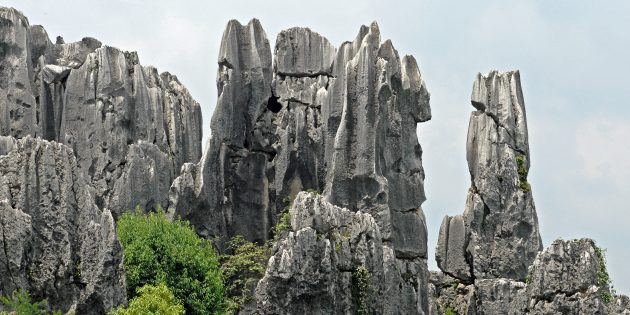
13. Taman Negara National Park, Malaysia
In the reserve you can watch elephants, buffaloes or tigers, meet more than 600 species of birds and about 200 species of fish. And also walk through the dense green forest, ride along the river with rapids or go with a guide for a night walk and find hidden spiders or snakes. This place is for those who love nature, want to visit the real jungle and get to know the flora and fauna of Asia.
How to get there. The park is located 240 kilometers from the capital of Malaysia, Kuala Lumpur. On your own, getting to the village of Kuala Tahan, where the reserve is located, is quite difficult and long - with transfers by bus or train. Therefore, it is easier to book a group transfer that will take you either directly to Kuala Tahan or to Kuala Tembling, from where for a fee you will have to sail to the reserve by boat.
When to come. The chance of getting caught in showers is less from July to September.
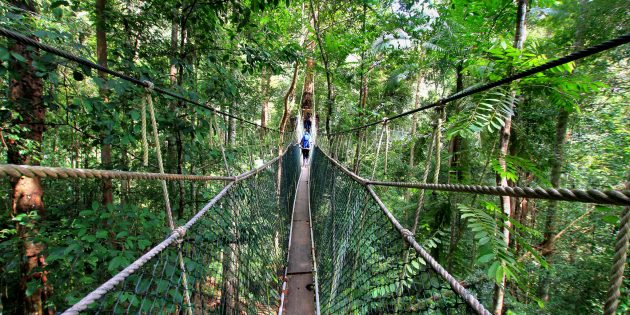
14. Phi Phi Islands, Thailand
In the bay of one of the paradise islands of the archipelago, the famous film "The Beach" with Leonardo DiCaprio was filmed. If you watched it, you can imagine how beautiful this place is. Azure water and white sand are all you need if you are tired of the noise of the metropolis and want to fully relax and unwind.
How to get there. Ferries depart from Phuket ports to Phi Phi several times a day, but you can also prefer a private boat.
When to come. In order not to catch the rains, choose the period from the beginning of November to the end of April.
![]()
15. Great Wall of China, China
One of the Seven Wonders of the World needs no idea: most likely, everyone has heard about the Great Wall of China. This gigantic structure seems endless, and it is worth visiting here at least in order to feel the power of one of the amazing places of our planet.
How to get there. Popular sections of the Mutianyu, Badaling, Simatai and Jinshanling wall can be reached in about 2 hours from Beijing by regular or tourist buses or by car.
When to come. In summer and spring, you will see green landscapes from the wall. In autumn, everything around will be bright and golden. In winter it is snowy, white and fluffy. Choose what you like best.
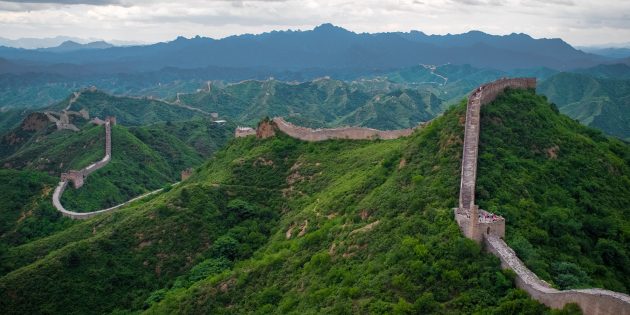
16. Volcanic Island of Aogashima, Japan
A small island, in the center of which there is an active volcano, is inhabited by people. True, there are very few of them - a little less than 200. Here you can swim in geothermal springs, go diving or fishing. If you're not a fan of tourist crowded places, seeking tranquility and admiring volcanoes, you'll love Aogashima.
How to get there. From the island of Hachijojima to Aogashima daily fly helicopters - the road will take about 20 minutes. Or you can swim (a little more than 2 hours) by ferry, when the waters are calm enough and allow you to do it.
When to come. At any time of the year. True, it is better to look at the weather in advance for the planned dates. If you are not lucky, there is a risk of spending a little more time on the island than you intended – you simply will not be able to sail away or fly away from it.
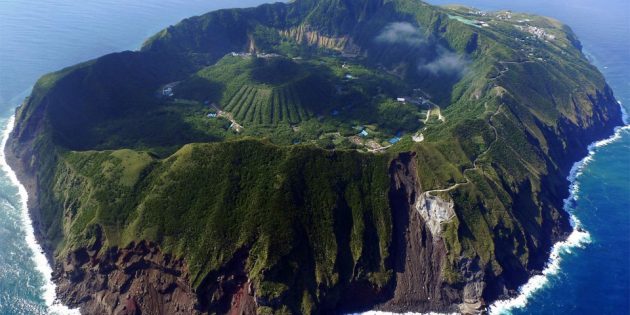
17. "Heaven's Gate" on Tianmen Mountain in Zhangjiajie National Park, China
The arch with a height of just over 130 meters was formed in 263 AD as a result of an earthquake. It is located high in the mountains and is often shrouded in fog, which is why it received such an unusual name.
"Heaven's Gate" is located on the territory of Zhangjiajie National Park, which is famous for its rich flora, fauna and picturesque views and is protected by UNESCO.
By the way, there is also a mountain that inspired the creators of the film "Avatar" to the fantastic landscapes of Pandora. It was even renamed the mountain "Avatar-Hallelujah". It is hard to believe that such beauty really exists and you can see it with your own eyes, but it is so. In addition, the reserve is inhabited by rare species of animals listed in the Red Book.
How to get there. You can get to the place from the city of Zhangjiajie by bus. Stay for the night (one day is hardly enough for you) - in the city itself, the village of the same name next to the reserve or near the entrance to it.
On the territory it is better to use a map so as not to miss anything interesting, because the area of Zhangjiajie Park is about 400 square kilometers. And to climb to the arch, you need to be a brave soul: the world's longest cable car and a winding highway with 99 turns lead there. Then you have to walk 999 steps up the stairs.
When to come. It is advised to visit the park in early autumn, although it works all year round.
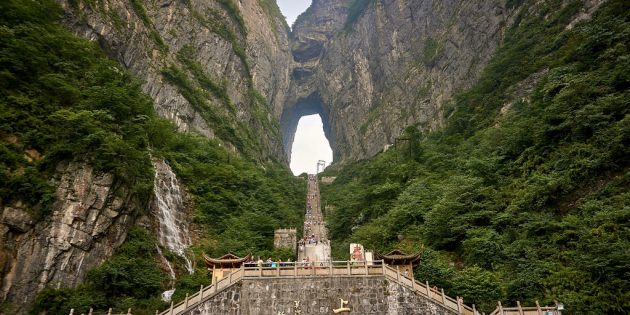
If you've been to one of these places, share your impressions in the comments. Or tell us about other picturesque corners of such a diverse Asia.
- asia
- 17_places_to_visit_in_asia
- 17_places_in_asia
- vacation
- heavens_gate
- tianmen_mountain
- zhangjiajie_national_park
- china
- volcania_island_of_aogashima
- japan
- great_wall_of_china
- phi_phi_islands
- thailand
- taman_negara_national_park
- malaysia
- shilin_stone_forest
- angkor_archaeological_park
- cambodia
- detian_falls
- vietnam
- forbidden_city
- mount_fuji
- rice_terraces_of_tegalalang
- son_dong_cave
- lakes_of_kelimutu
- nong_han_kumphawapi_lake
- taktsang_lakhang_monastery
- bhutan
- borobudur_temple_complex
- colored_hills_of_danxia

- Arts
- Business
- Computers
- Jogos
- Health
- Início
- Kids and Teens
- Money
- News
- Recreation
- Reference
- Regional
- Science
- Shopping
- Society
- Sports
- Бизнес
- Деньги
- Дом
- Досуг
- Здоровье
- Игры
- Искусство
- Источники информации
- Компьютеры
- Наука
- Новости и СМИ
- Общество
- Покупки
- Спорт
- Страны и регионы
- World


